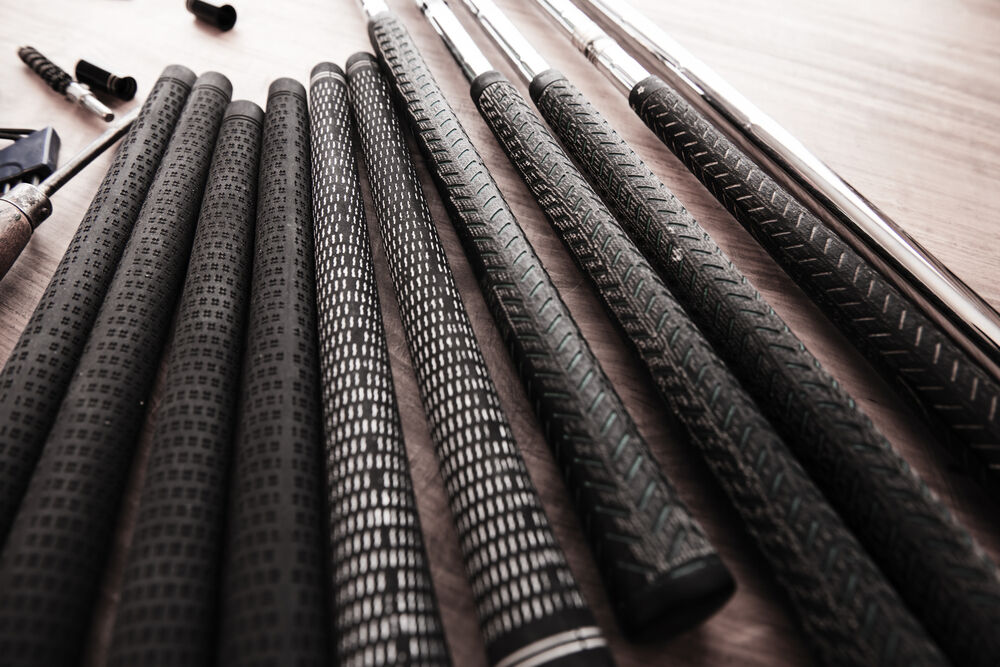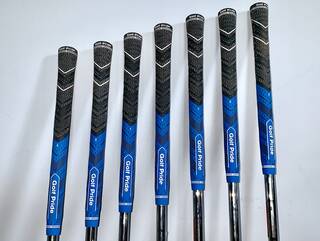Golf Grip Size Chart: How to Dial in the Perfect Size
What golf grip size fits you? This chart shows exactly how to dial in the perfect size for you

Of all the details you consider when you labor over a golf club purchase or adjustment, where does grip size rank? Golf grip size is certainly an overlooked element, but like every other component on your golf club, it can and should be tailored to each individual golfer.
Here’s a golf grip size chart that illustrates exactly what grip size you should select given your hand measurement, or alternatively, glove size. However, for an even more perfect fit, we'll show you how to use extra wraps beneath the grip to dial in any grip size, like splitting the difference between standard and midsize, for example.
Golf Grip Size Chart
Measuring your hand is a more accurate method of determining your proper grip size than simply using your glove size, so if you have a ruler handy, use this method. Start at the tip of your middle finger and measure straight down to your wrist. Use the golf grip size chart below to determine your grip size.
|
Hand Size |
Glove Size |
Grip Size |
|
Less than 5 inches |
Junior |
Junior |
|
5-6.5 inches |
Women’s S-M-ML-L; Men’s S, Cadet S |
Undersize |
|
6.5-7.5 inches |
Men’s M-ML, Cadet M-ML |
Standard |
|
7.5-9 inches |
Men’s L-XL, Cadet L-XL |
Midsize |
|
9+ inches |
Men’s XXL-XXXL, Cadet XXL |
Jumbo |
The Impact of Golf Grip Size
Believe it or not, the size of your grip can influence your performance on the course, most noticeably, shot shape. That’s because the size of the grip determines how involved your hands are in the swing.
Generally speaking, here’s how grip size affects shot shape:
- Smaller grips help reduce a slice;
- Larger grips help reduce a hook.
With a smaller grip, your hands are more active throughout the swing, and will turn the club over quicker, which of course will lead to straighter shots if you’re struggling with a slice. On the other hand, larger grips will take your hands out of the swing a little bit, and if you tend to turn the club over too quickly, resulting in a hook, a larger grip could help straighten out your ball flight.
Of course, as with any variable in golf equipment, your individual results may or may not align with the general rule.
Building Up Grip Size With Extra Wraps
If you’re used to playing standard-sized grips and then you wrap your hands around a midsize grip, you might feel like you’re holding a baseball bat. You might not think you’d notice the 1/16” difference between a standard and midsize grip, but I’ve tested both sizes thoroughly over the last two years, and trust me when I say that the second you get your hands on a grip, you know which size it is.
Let’s say your hand size fits a standard grip, but you are at the top or bottom of that scale, or you want a little shot-shape bias built into the grip of your club, but you don’t want the club to feel completely different in your hands. That’s where extra wraps of tape come into play. You can manipulate the size of a grip by wrapping the shaft in additional layers of grip tape or masking tape before applying your grip.
In addition to tinkering with standard and midsize grips, I’ve split the difference using extra wraps. It takes about four extra wraps of tape to go from a standard to a midsize grip, and a midsize to a jumbo grip. Meanwhile, it takes two extra wraps to go from an undersized grip to a standard grip.
That means that if you want to split the difference between two grip sizes, here’s how you should do it:
- Undersize-Standard: Undersize grip with one extra wrap
- Standard-Midsize: Standard grip with two extra wraps
- Midsize-Jumbo: Midsize grip with two extra wraps
Some players also prefer to use extra wraps only on the bottom half of the grip, which reduces taper and reduces the bottom hand’s involvement in the swing without manipulating the top hand. In fact, this practice became so popular on tour that Golf Pride created one of it’s most popular grips today, the MCC Plus 4. The Plus 4 replicates four extra layers of wrap on the bottom hand.

Time to Step Up Your Grips: An Inside Look at Golf Pride Grips
Other Grip Considerations: Moisture, Firmness & Texture
Beyond grip size, there are a few additional elements that you should consider when selecting a grip.
First, do you need a grip that works against moisture? Whether you often play in wet, rainy conditions, or you need a grip that performs in sweaty hands, you should consider a grip that works well when wet.
It’s also important to consider your preference for how a grip feels in your hands. Do you like a firm-feeling grip, or one that’s softer? If you like feedback on strike location from every shot, a firmer grip will suit you better. If you like a softer feeling at impact without precise feedback, a softer grip is better.
In addition to more comfort in your hands, softer grips dampen the feel of impact in your hands, which ultimately reduces the feedback you get from your strike.
Different grips also have different patterns and textures to them. Consider how much texture you prefer in your grip when making your selection.
Getting the Right Grip
As golfers, we excruciate over every detail of our golf clubs. But at the end of the day a golf club has only three components, the head, the shaft, and the grip. If you’re not putting some thought into what grip goes on the butt of your club, then it’s an untapped resource that could influence your performance on the course.